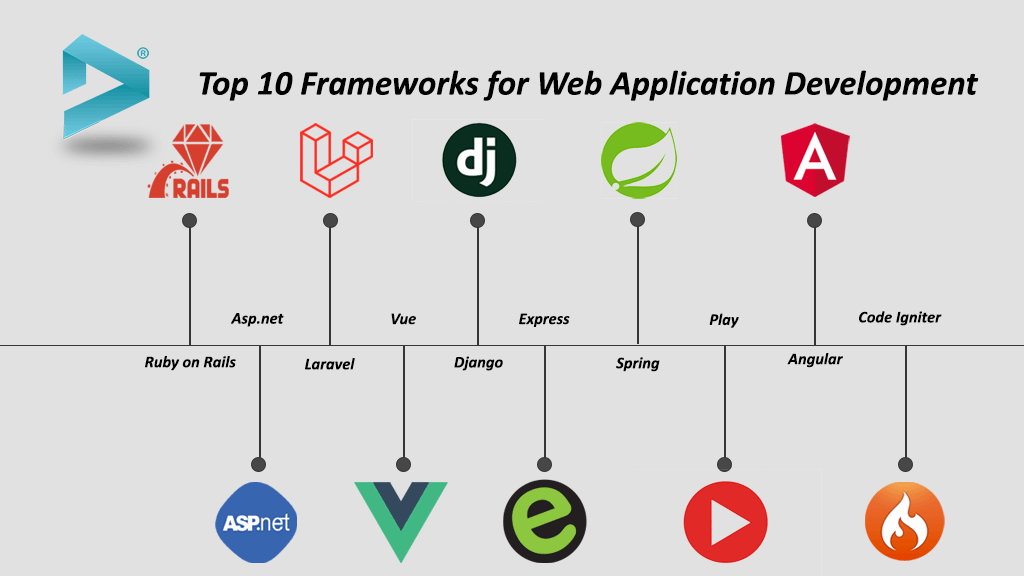Web Application Framework
Please Share this Post
The Web Application Framework, as the foundation for developing web applications, plays a pivotal role in modern software development. With its comprehensive set of tools and libraries, Web Application Frameworks streamline the development process, enhance security, and promote scalability. By utilizing Web Application Frameworks, developers can create robust and efficient web applications that meet the ever-evolving demands of the digital landscape.
OR
A web application framework is a software framework designed to support the development of web applications by providing a structured environment and a set of pre-defined tools, libraries, and components. These frameworks streamline the process of building web applications by offering common functionalities, such as handling HTTP requests, managing session data, interacting with databases, and rendering user interfaces.
Here are some key characteristics and components of web application frameworks:
Model-View-Controller (MVC) Architecture: Many web application frameworks follow the MVC architectural pattern, which separates the application into three main components:
Model: Represents the application’s data and business logic.
View: Handles the presentation and rendering of data to the user.
Controller: Acts as an intermediary between the model and view, handling user input and updating the model or view accordingly.
Routing: Web frameworks typically provide routing mechanisms to map incoming HTTP requests to specific handlers or controller actions based on the requested URL and HTTP method. Routing allows developers to define clean and logical URLs for different parts of the application and organize code more effectively.
Database Integration: Most web frameworks include tools and libraries for interacting with databases, such as Object-Relational Mapping (ORM) frameworks or database abstraction layers. These tools simplify tasks such as querying databases, mapping database records to objects, and managing database migrations.
Template Engines: Web frameworks often come with template engines or libraries for generating dynamic HTML content. Template engines allow developers to define HTML templates with placeholders for dynamic data, which are then populated with data from the application’s model or controller before being rendered to the user.
Authentication and Authorization: Security features such as authentication (verifying the identity of users) and authorization (controlling access to resources based on user permissions) are commonly provided by web frameworks. These features help developers implement user authentication mechanisms, manage user sessions, and enforce access control policies.
Middleware: Middleware components allow developers to inject custom logic or functionality into the request/response processing pipeline of the web application. Middleware can be used for tasks such as logging, error handling, authentication, caching, and request/response manipulation.
Testing Support: Web frameworks often include features and utilities to facilitate automated testing of web applications, such as testing frameworks, test runners, and utilities for mocking HTTP requests and responses.
Security Features: Many web frameworks offer built-in security features and mechanisms to help developers prevent common security vulnerabilities, such as cross-site scripting (XSS), cross-site request forgery (CSRF), and SQL injection. These features may include input validation, output encoding, CSRF protection tokens, and security headers.
Examples of popular web application frameworks include:
Django: A high-level web framework for Python that emphasizes rapid development, clean design, and pragmatic solutions.
Ruby on Rails: A full-stack web framework for Ruby that follows the MVC pattern and emphasizes convention over configuration.
Express.js: A minimalist web framework for Node.js that provides a flexible and unopinionated approach to building web applications.
Spring Boot: A Java framework for building enterprise-grade applications, with support for dependency injection, aspect-oriented programming, and MVC architecture.
ASP.NET Core: A cross-platform framework for building modern web applications with .NET, offering built-in support for MVC, Web API, and Razor Pages.
Overall, web application frameworks play a crucial role in simplifying and accelerating the development of web applications by providing developers with a set of tools, conventions, and best practices to build robust, scalable, and maintainable applications.

Leave a Reply